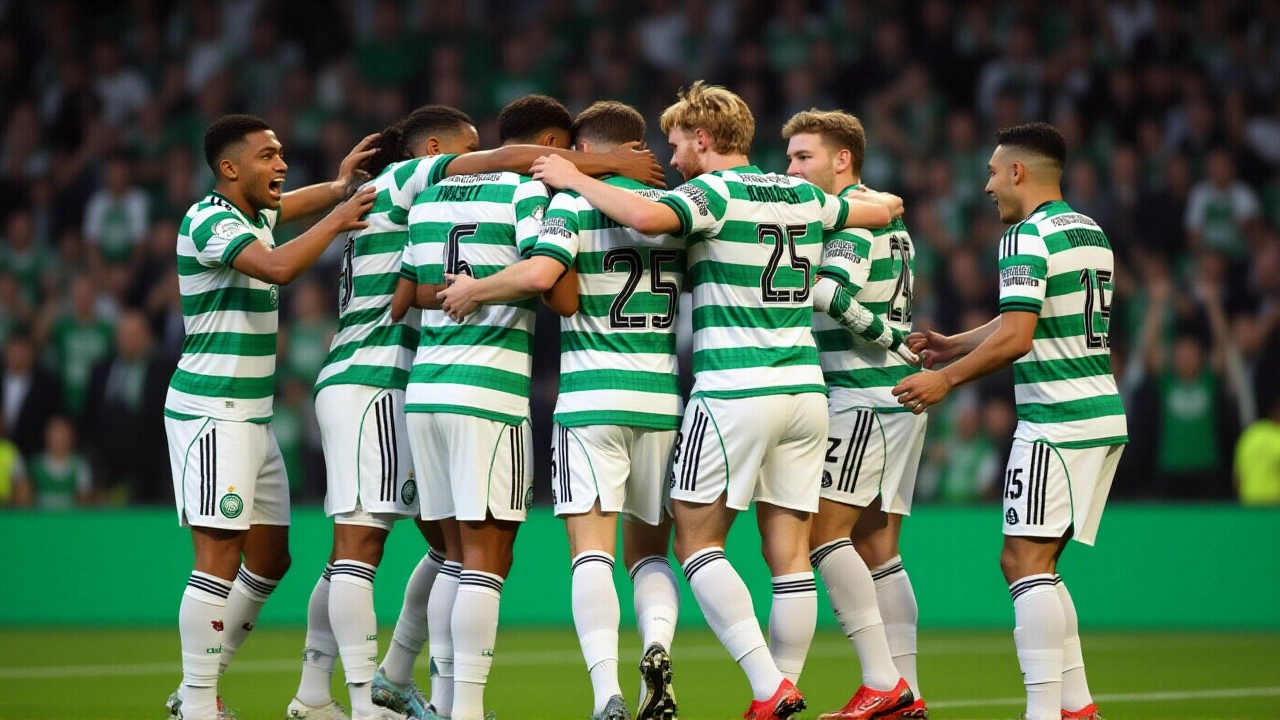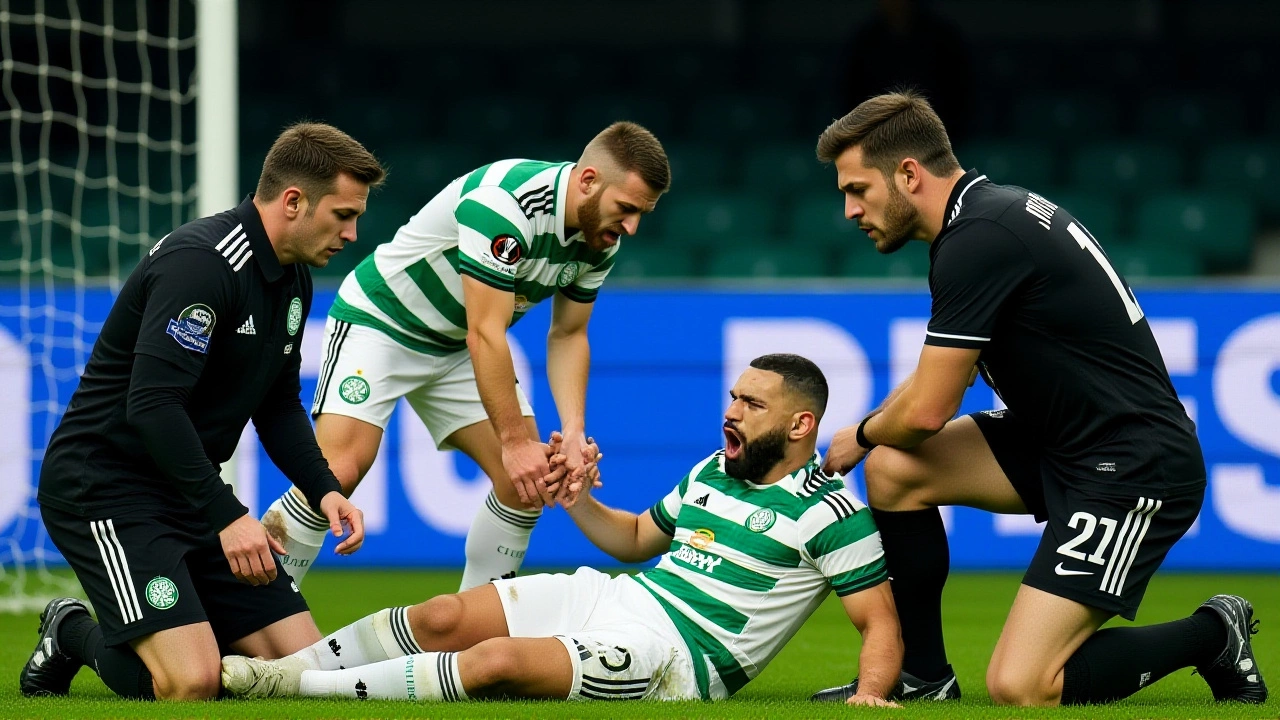When Celtic Football Club announced its annual results last week, fans expected financial updates and boardroom changes. What they got was a gut punch: Martin O'Neill, the club’s senior advisor and former manager of Leicester City, Aston Villa, and the Republic of Ireland national team, confirmed a season-ending injury to key centre-back Cameron Carter-Vickers and a prolonged absence for forward Kelechi Iheanacho. The news, delivered after the club’s AGM at Celtic Park in Glasgow, didn’t just dampen spirits — it exposed a fragile squad at a time when every point in the Scottish Premiership matters.
Season over for Carter-Vickers, Iheanacho still months away
O'Neill didn’t mince words. Cameron Carter-Vickers, the 27-year-old American international who signed from Tottenham in 2023, has suffered a ruptured ACL — the same injury that sidelined him for nearly a year in 2022. This time, surgical repair and rehab mean he won’t return until at least next summer. "It’s devastating," O'Neill told reporters. "He was our most consistent defender. We’re not just losing a player — we’re losing leadership on the back line." Meanwhile, Kelechi Iheanacho, the Nigerian striker signed on loan from Manchester City last January, remains "weeks away" from full training. Though O'Neill didn’t specify how many weeks, sources close to the medical staff say it’s closer to six to eight — meaning Iheanacho won’t feature until late March or early April. That’s a major blow to Celtic’s attacking depth, especially with top scorer Jota still recovering from a hamstring strain. The injury list now includes at least five other players: left-back Ntando Mahlangu (hamstring), midfielder Tomoki Iwata (ankle), young centre-back Josh Doig (knee), and two academy prospects sidelined with stress fractures. "Multiple setbacks," O'Neill called it. "We’ve never had this many key players out at once in the last decade."Off-field chaos adds pressure
The injury crisis didn’t arrive in a vacuum. It’s unfolding amid what insiders describe as "off-field drama." Fan unrest has grown since October, with protests outside Celtic Park over transfer policy and perceived lack of ambition. A player, speaking anonymously to The Scotsman on November 10, 2025, said O’Neill had "changed mindset" — shifting from a purely football-focused role to one that’s more involved in club culture and morale. "He’s not just talking tactics anymore. He’s in the dressing room. He’s asking how guys are sleeping, how their families are doing. It’s different." That shift may explain why O'Neill took the unusual step of addressing the media not just on injuries, but on unity. "We need the fans behind us now more than ever," he said. "This isn’t about blame. It’s about belief." The timing couldn’t be worse. Celtic are currently third in the Scottish Premiership, eight points behind leaders Rangers, with European qualification still mathematically possible but slipping. A winless streak in January — their first since 2017 — has fans questioning whether the club is in freefall.
O’Neill’s dual role: manager-in-waiting or interim fixer?
Here’s the twist: O’Neill isn’t just giving injury updates. He’s running the search for a new permanent manager. On November 21, 2025, he told Sky Sports: "The process is progressing nicely. Something will happen very soon." That statement, made just days after the AGM, suggests he’s deeply embedded in the club’s leadership — not just as a former manager, but as an acting director. Sources say O’Neill has interviewed at least three candidates, including former Brighton boss Roberto De Zerbi (who reportedly declined due to family reasons) and Dutch tactician John van den Brom. The club’s board is reportedly split: some want a young, progressive coach; others demand a proven winner with European experience. O’Neill, who led Celtic to the 2003 UEFA Cup final, clearly leans toward the latter. "He’s not looking for a philosopher," one insider said. "He’s looking for someone who can win games next week."What’s next for Celtic?
With Carter-Vickers gone and Iheanacho sidelined, Celtic’s next 10 games — including crucial clashes with Aberdeen, Hearts, and a potential Europa League qualifier — will be decided by depth. Under-21 centre-back Liam McNeilly, 19, is expected to start alongside 35-year-old Dedryck Boyata. Up front, young striker Liam Scales, who scored his first senior goal last month, may get his first extended run. The club’s medical team has been criticized for overworking players last season. Celtic played 57 games in 2024-25 — the most in the club’s history. That’s a red flag for injury risk. "We’re paying the price," said Dr. Fiona Murray, a sports physiologist at the University of Glasgow. "Teams that push beyond 55 games without rotation tend to see a 40% spike in soft-tissue injuries the following season. Celtic hit 57."
Why this matters beyond Glasgow
Celtic’s crisis isn’t just about one club. It’s a warning to other European sides chasing domestic dominance while juggling European competition. The financial gap between Celtic and Rangers is shrinking — but the physical gap? It’s widening. With Premier League clubs investing millions in sports science and recovery tech, Celtic’s outdated facilities — still using 2010s-era recovery protocols — are becoming a liability. And yet, there’s hope. In 2019, after losing their captain and top scorer to injury, Celtic won the league by 19 points. They did it with grit, youth, and belief. Can they do it again? "We’ve been here before," O’Neill said. "And we’ve always come out stronger."Frequently Asked Questions
How does Carter-Vickers’ injury impact Celtic’s title chances?
Carter-Vickers’ season-ending ACL tear removes Celtic’s most reliable defender and a key organizer of the back line. With only 11 clean sheets in 27 league games this season, his absence makes Celtic vulnerable — especially against Rangers and Aberdeen, who’ve scored in 90% of their away matches. Without him, Celtic’s defensive record could slip further, making a top-two finish unlikely unless they win 80% of their remaining games.
Why is Martin O’Neill involved in manager selection?
O’Neill, though not officially on the board, holds an advisory role with significant influence. He led Celtic to European glory in 2003 and is respected by both fans and players. With the club in transition, the board has tapped him to stabilize the situation — both on and off the pitch — while identifying a long-term successor. His public comments suggest he’s actively shaping the next managerial appointment.
What’s the timeline for Iheanacho’s return?
O’Neill said Iheanacho is "weeks away," but medical insiders indicate 6–8 weeks of rehab remain. That puts his return around late March or early April, meaning he’ll miss at least eight league games and potentially the Europa League knockout rounds. His absence leaves Celtic without a natural finisher — he’s scored 12 goals in 21 appearances this season, including four in the last month alone.
Are other Celtic players injured beyond Carter-Vickers and Iheanacho?
Yes. At least five other first-team players are sidelined: left-back Ntando Mahlangu (hamstring), midfielder Tomoki Iwata (ankle), young centre-back Josh Doig (knee), and two academy players with stress fractures. This brings the total to at least seven key absences — the worst injury crisis since 2016, when Celtic lost five starters in a single month during a title run.
How has fan unrest affected team performance?
While no direct statistical link exists, players have acknowledged the emotional toll. Anonymous sources say the protests and social media pressure have increased anxiety, especially among younger players. O’Neill’s focus on mental well-being — holding team dinners and one-on-one talks — suggests the club recognizes the psychological toll. Performance dipped after the first major protest in November, with Celtic failing to score in three consecutive games.
What does this mean for Celtic’s European chances?
Celtic currently sit just outside the Europa League qualifying spots, needing a top-three finish to secure entry. With their defensive depth depleted and key attackers sidelined, their chances have dropped from 65% to below 30% in the last month. Even if they qualify, playing in Europe with a squad this thin could lead to more injuries — potentially jeopardizing their domestic campaign entirely.
